Details of the Fractal Design Venturi HP-14 PWM
Venturi fans have some of the softest mounting corners. The transmission of vibrations from moving parts further away to anything (case plates, heatsink fins, …) is thus very significantly damped. Compared to other (even more modern Fractal Design models), these fans have more robust blades, which are both thicker and wider, and as a result, higher static pressure is also achieved at comparable speeds.
In the Venturi lineup, Fractal Design has the HF (High Flow) and the HP (High Pressure, or to be exact High Static Pressure) fans, of which the model HP-14 PWM will now be of interest. This means a 140-millimeter fan with PWM control support, which is designed especially for efficient cooling of radiators.
To ensure that it doesn’t remain just “platitudes”, it’s a good idea to explain some of the reasons why such a categorisation – for radiators – is made. And of course not only for those, but generally for environments with higher restrictiveness. Even compared to Fractal Design’s newer fans (Aspect and Prisma), you may notice larger blades, especially wider ones that fill in the gaps more. Thus, with an otherwise very similar geometry (with moderately curved leading edges of the blades), a higher static pressure is achieved at a comparable speed and thus a smaller drop in airflow over an obstacle. This is only true for the Venturi HP series, the Venturi HF models on the other hand are already “leaky” (with large gaps that will not withstand the higher back pressure as well).
The fan blades are augmented with two elements to improve aerodynamic or acoustic properties. First is a step that extends along each blade. It is intended to suppress intake microturbulence for more laminar flow at the trailing edges, which increases dynamic pressure and thus fan airflow. And this has the potential to happen even at lower noise levels.
Small teeth near the fan hub are also used to reduce noise or suppress resonant frequencies/tonal peaks in certain situations. These are no longer used by Fractal Design for newer fans. This can sometimes be a mistake, as the direct frequency analysis comparison of the sound of Dynamic X2 GP-12 (a fan with these serrations) and Aspect 12 (a fan without the serrations) shows. It is true that this modification is in places with a very low pressure difference and it seems that it may not matter, but here and there its benefit does come up. However, it can also be counterproductive (and increase noise, which we probably encountered in our tests as well. However, it is most certainly individual (obstacle by obstacle) and any unilateral statement would be an inappropriate generalization of overly complex phenomena.
In the hierarchy of Fractal Design fans, the Venturi HP-14 PWM are above the Aspect 14 PWM. Not only in terms of price, but also in terms of design. The more robust impeller design has already been mentioned (just to add, at 210 g the Venturi is about 35% heavier than the Aspect) and the difference in MTBF is also important. While the Aspect 14 PWM’s MTBF is indexed at 90,000 hours, the Venturi HP-14 PWM’s MTBF is 150,000 hours. This points to the possibly longer service life of the Venturi fans, which, by the way, use fluid dynamic bearings (FDB) instead of plain bearings (in the Aspect fans).
And then there’s one more thing putting Venturi fans in a higher class, and actually the highest class that Fractal Design has. That thing is the all rubber corners. Aspect fans don’t even have rubberized ones, which of course isn’t a drawback with these fans as they don’t transmit any vibrations anyway. With the Venturi fans, the situation is a bit different, and as you’ll see in the tests, this design is useful for eliminating vibrations. Moreover, the corners are modular and you can swap them for another type with 105 mm mounting hole spacing (instead of 125 mm). This comes in handy when the case or cooler clips only support smaller (120mm) fans by default, but as far as impeller size is concerned, a larger format otherwise suits the situation.
The mounting corners are only slid into the frame groove or slid out of the frame (for disassembly). They are always held firmly in place and are attached to the case traditionally via self-tapping screws, which dig into the rubber material (and also do not let go of it). However, the corners are really soft (and thus highly effective), with a hardness of an estimated 25–30 Shore.
In addition to the all-black design, the Venturi HP-14 PWM fans are also available in white impeller variants.
And one more thing: To navigate through the result graphs as easily as possible, you can sort the bars according to different criteria (via the button on the bottom left). By (non)presence of lighting, profile thickness, brand, bearings, price or value (with the option to change the sorting to descending or ascending). In the default settings, there is a preset “format” criterion that separates 120mm fans from 140mm fans.
- Contents
- Details of the Fractal Design Venturi HP-14 PWM
- Overview of manufacturer specifications
- Basis of the methodology, the wind tunnel
- Mounting and vibration measurement
- Initial warm-up and speed recording
- Base 6 equal noise levels…
- ... and sound color (frequency characteristic)
- Measurement of static pressure…
- … and of airflow
- Everything changes with obstacles
- How we measure power draw and motor power
- Measuring the intensity (and power draw) of lighting
- Results: Speed
- Results: Airlow w/o obstacles
- Results: Airflow through a nylon filter
- Results: Airflow through a plastic filter
- Results: Airflow through a hexagonal grille
- Results: Airflow through a thinner radiator
- Results: Airflow through a thicker radiator
- Results: Static pressure w/o obstacles
- Results: Static pressure through a nylon filter
- Results: Static pressure through a plastic filter
- Results: Static pressure through a hexagonal grille
- Results: Static pressure through a thinner radiator
- Results: Static pressure through a thicker radiator
- Results: Static pressure, efficiency depending on orientation
- Reality vs. specifications
- Results: Frequency response of sound w/o obstacles
- Results: Frequency response of sound with a dust filter
- Results: Frequency response of sound with a hexagonal grille
- Results: Frequency response of sound with a radiator
- Results: Vibration, in total (3D vector length)
- Results: Vibration, X-axis
- Results: Vibration, Y-axis
- Results: Vibration, Z-axis
- Results: Power draw (and motor power)
- Results: Cooling performance per watt, airflow
- Results: Cooling performance per watt, static pressure
- Airflow per euro
- Static pressure per euro
- Results: Lighting – LED luminance and power draw
- Results: LED to motor power draw ratio
- Evaluation





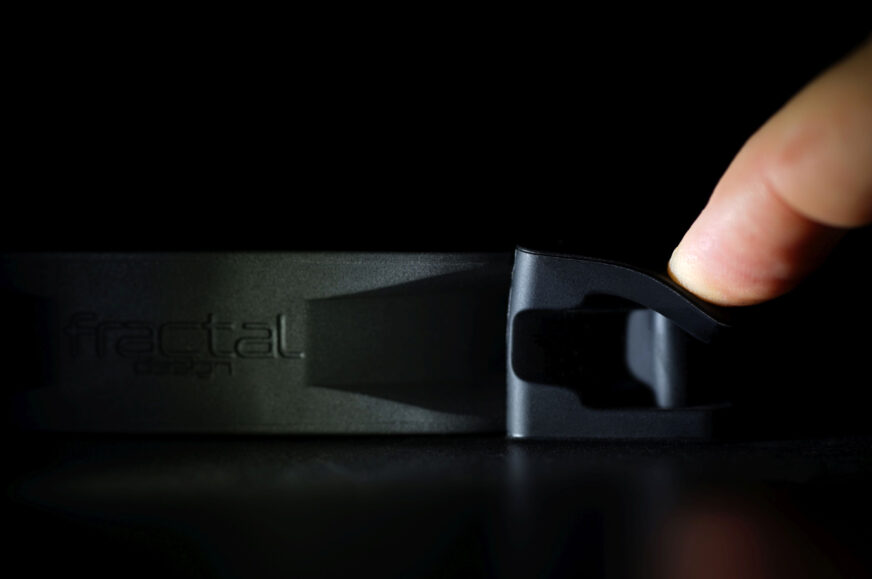
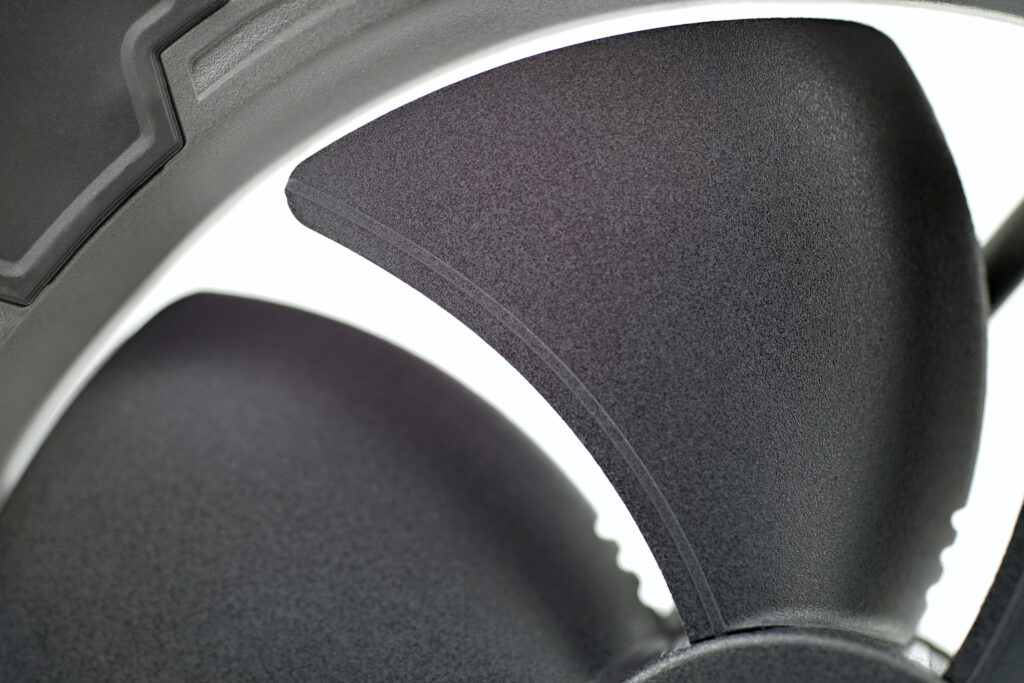
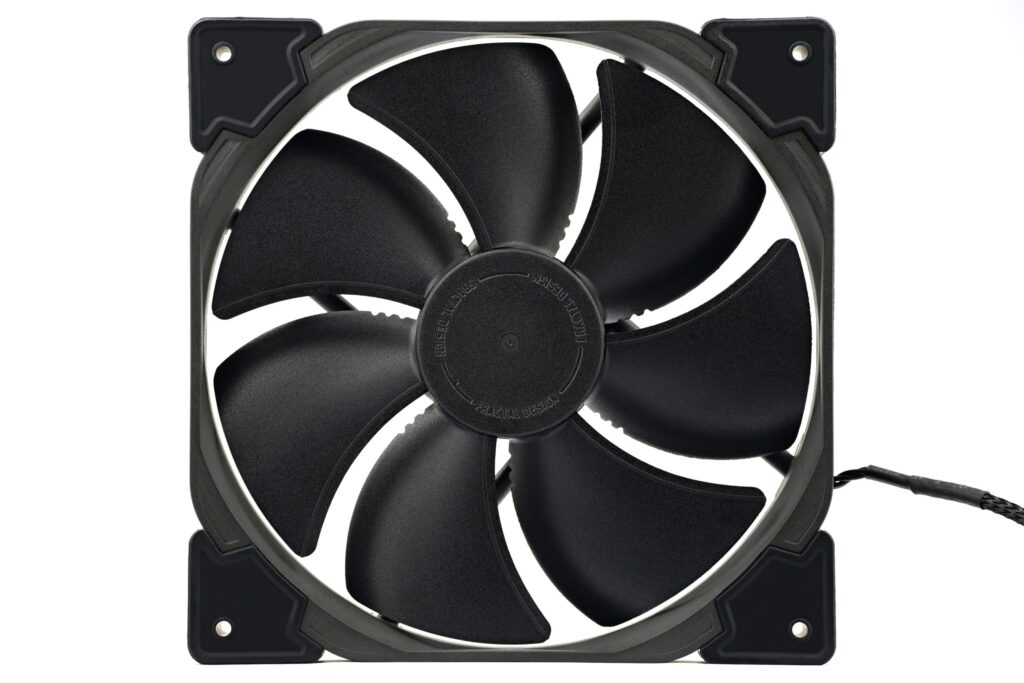
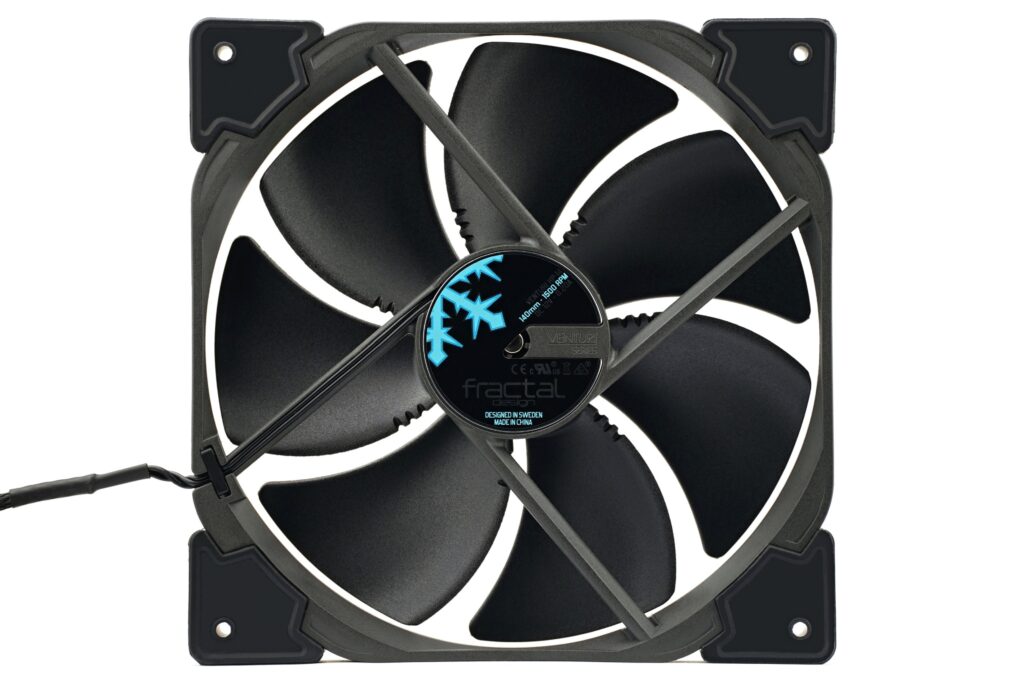


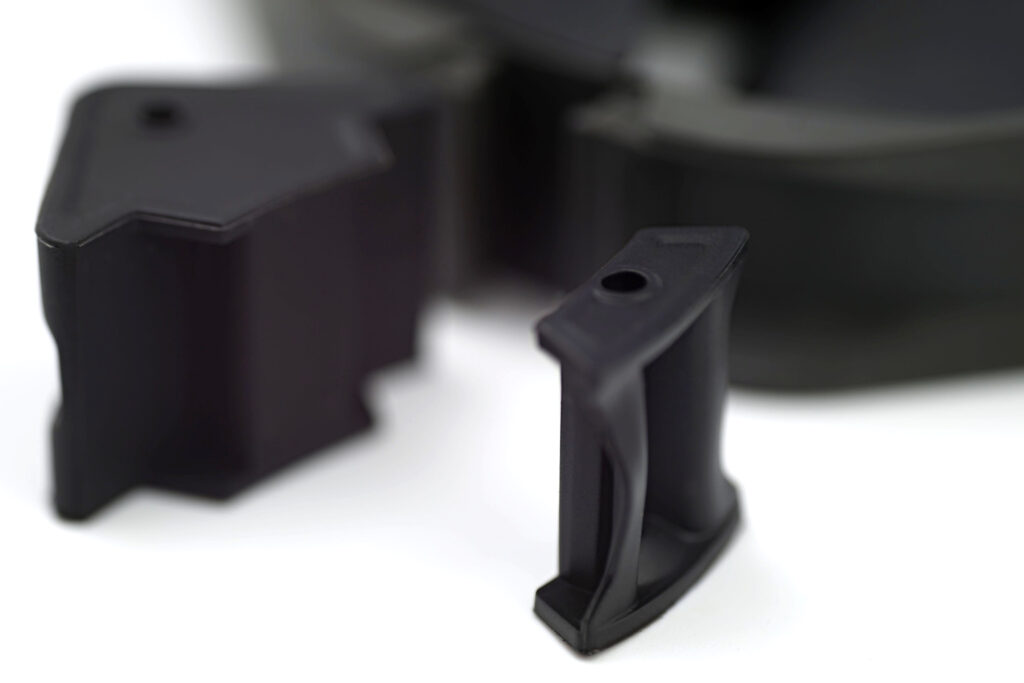






I wonder the reason why these type of corners, despite being so effective, are uncommon. Is it a lack of necessity due to inherent low vibrations, rubber pads/mounts being good enough/better, or some kind of cost or mechanical concerns?
It’s hard to say anything for sure. But I will dare to speculate.
Let’s assume that higher vibrations characterize mainly the cheaper fans, where the goal was to make them as cheap as possible. All-rubber corners don’t fit into this scheme (lowest cost) (such Arctic P12 don’t even have rubber pads), so they are usually not used. And again, when there is a bigger budget for fans, the funds can be put into things that suppress vibrations more effectively than perfect anti-vibration corners. Whether it’s a stiffer material (just with a larger thickness or a different composition, for example LCP instead of PBT) or a less vibrating motor etc.